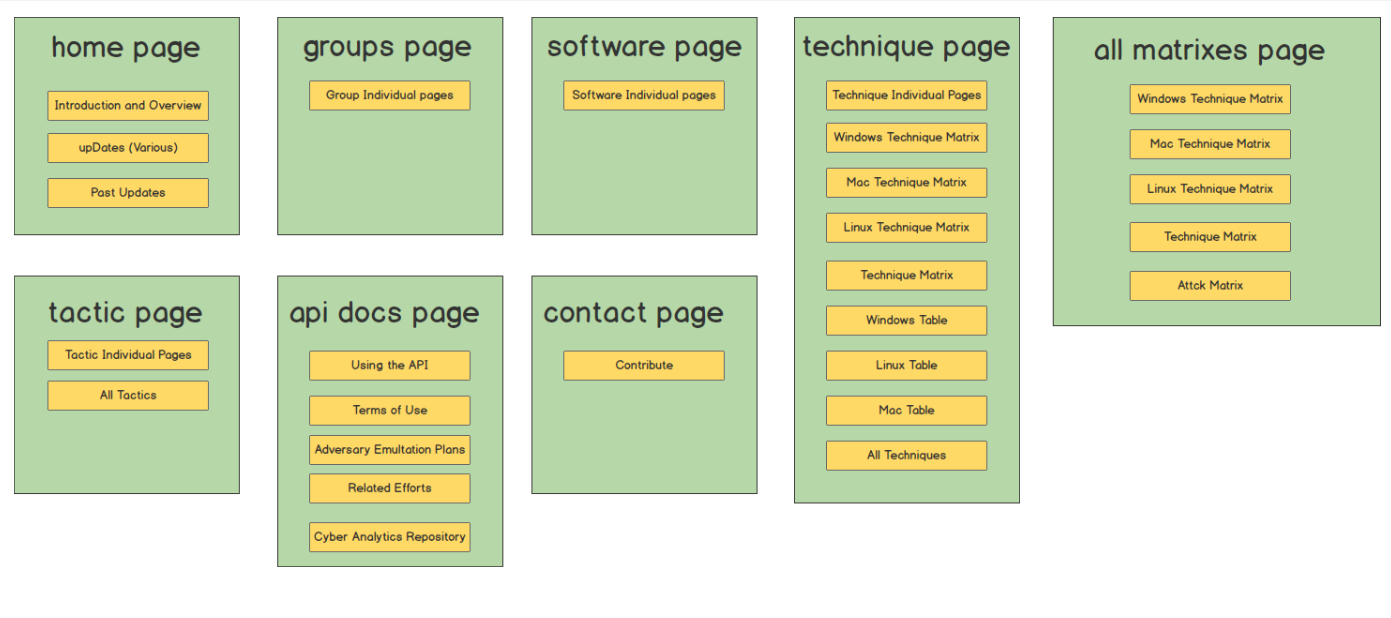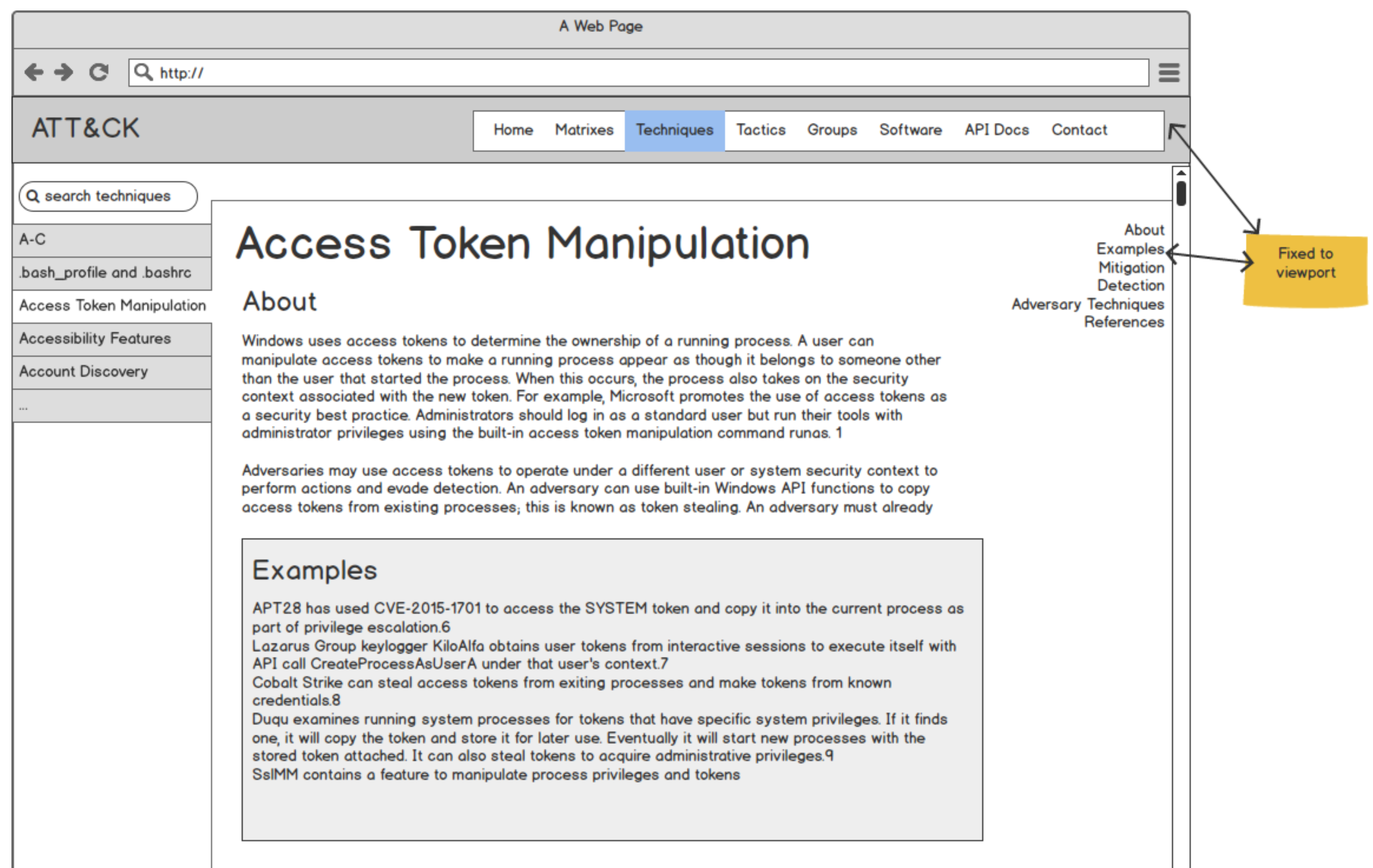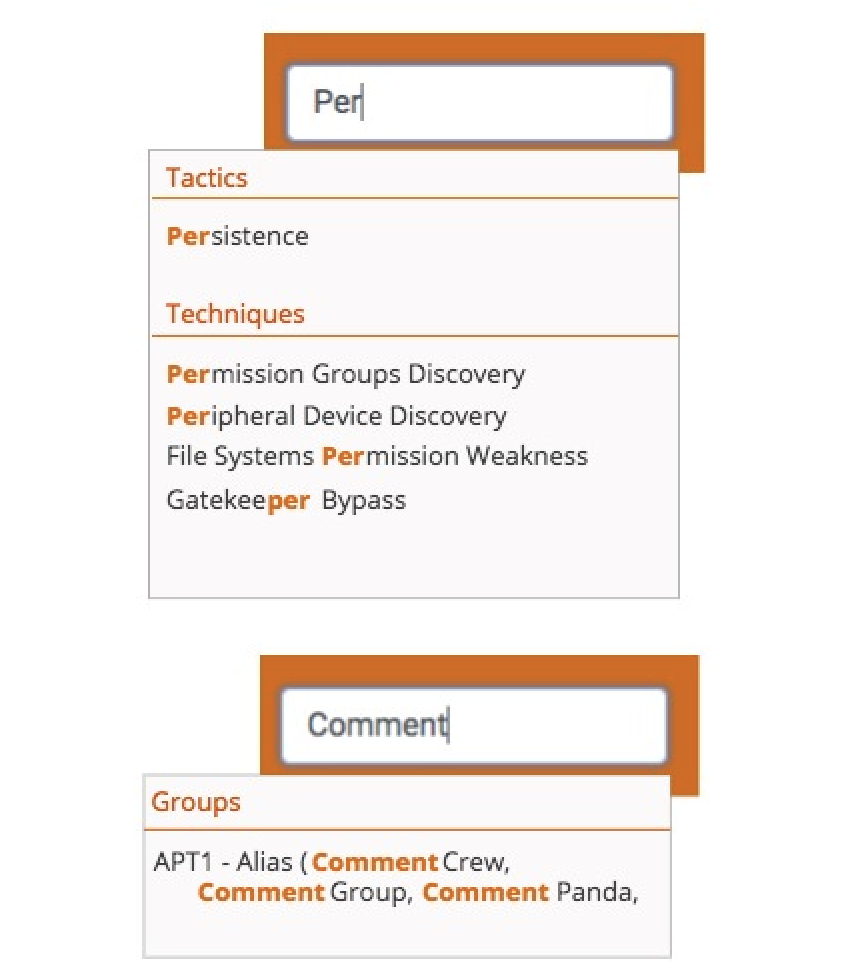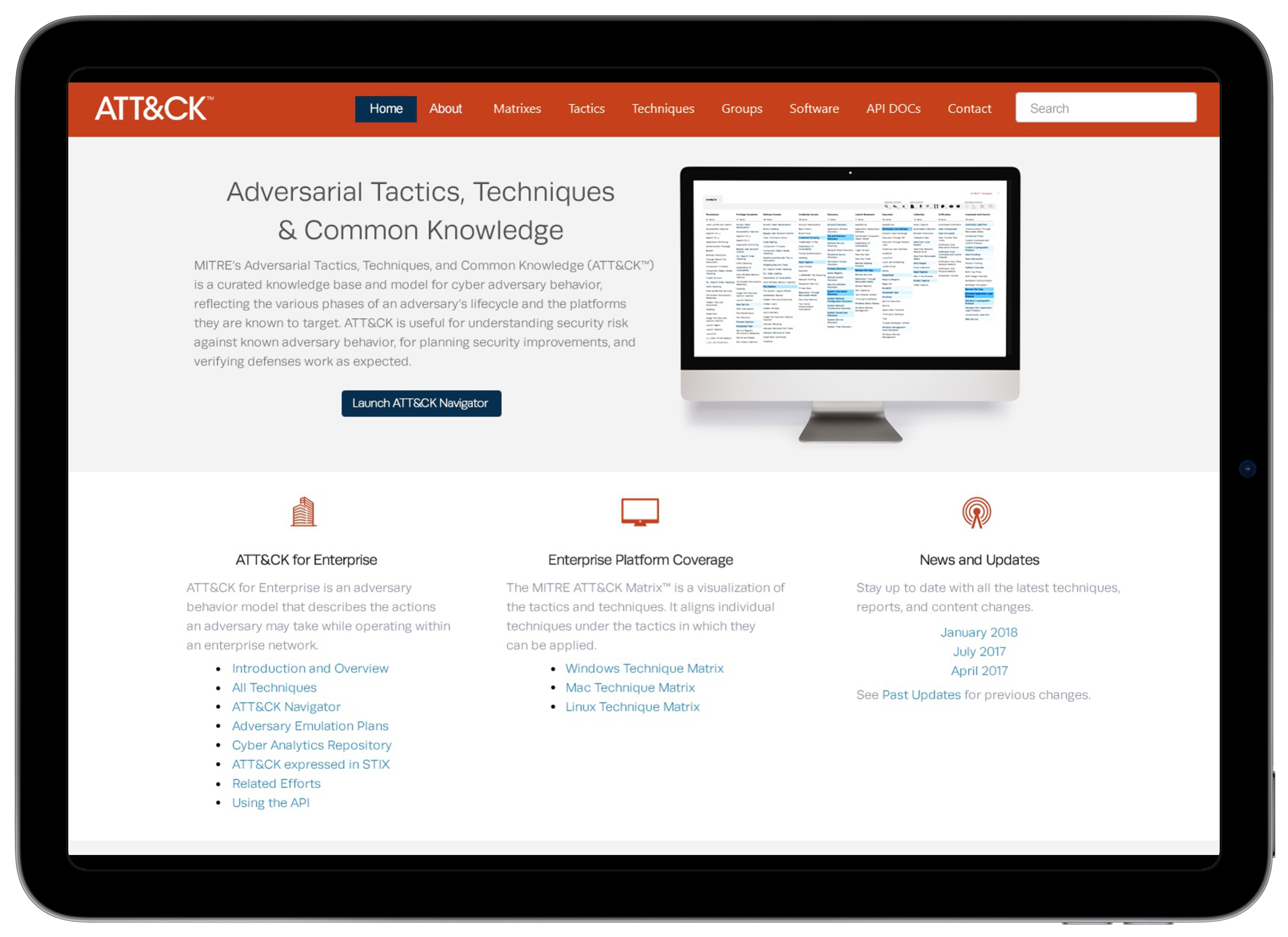MITRE ATT&CK
MITRE ATT&CK® is a globally-accessible knowledge base of adversary tactics and techniques based on real-world observations. One of my first efforts when I joined MITRE in 2017 was designing a new website, migrating from their Wiki based format.
- Role: UX Designer & Researcher
- Domain: Cybersecurity
- Duration: Fall 2017
Introduction
MITRE ATT&CK is a universally accessible, continuously updated knowledge base for modeling, detecting, preventing and fighting cybersecurity threats. Back when I first began my career at MITRE, they were looking to move from their previous Wiki based site to a more flexible web application. Users were eager to have a more adaptable search and easier to traverse interface.


Challenges
As with any new design opportunity, there are challenges. This was no exception.
- Quick turn-around time requested
- Informationally dense - the site essentially acts as an encyclopedia of knowledge for cybersecurity attacks
- Outside-organization user testing unavailable
Approach
With a quick turn-around time requested to release the site, we decided to utilize a lean UX approach:
- Personas
- Landscape analysis of Wiki site
- Proxy user interviews with MITRE subject matter experts
- Iterative wireframe design using Balsamiq
- MVP High Fidelity prototype using Bootstrap UI framework (the rage at the time)
- Guerilla user testing of prototype (within organization)


Outcome
Initial informational layout tested well with users, finding the new navigation structure easy to traverse and preferable to the Wiki format. Issues included finding the search design inadequate for advanced searches, leading to further design cycles focused on search.
MITRE ATT&CK launched the redesigned website in 2017. It's evolved since original designs but the core design patterns are still in place: https://attack.mitre.org/. ATT&CK has users from 226 different countries and is industry standard for identifying and documenting Cybersecurity threats.
What I Learned
This project was pivotal in my journey with design. It highlighted the significance of iterative user feedback, ensuring user involvement from the outset, and demonstrated that user-centered design principles can be universally applied, regardless of one's familiarity with the domain.
